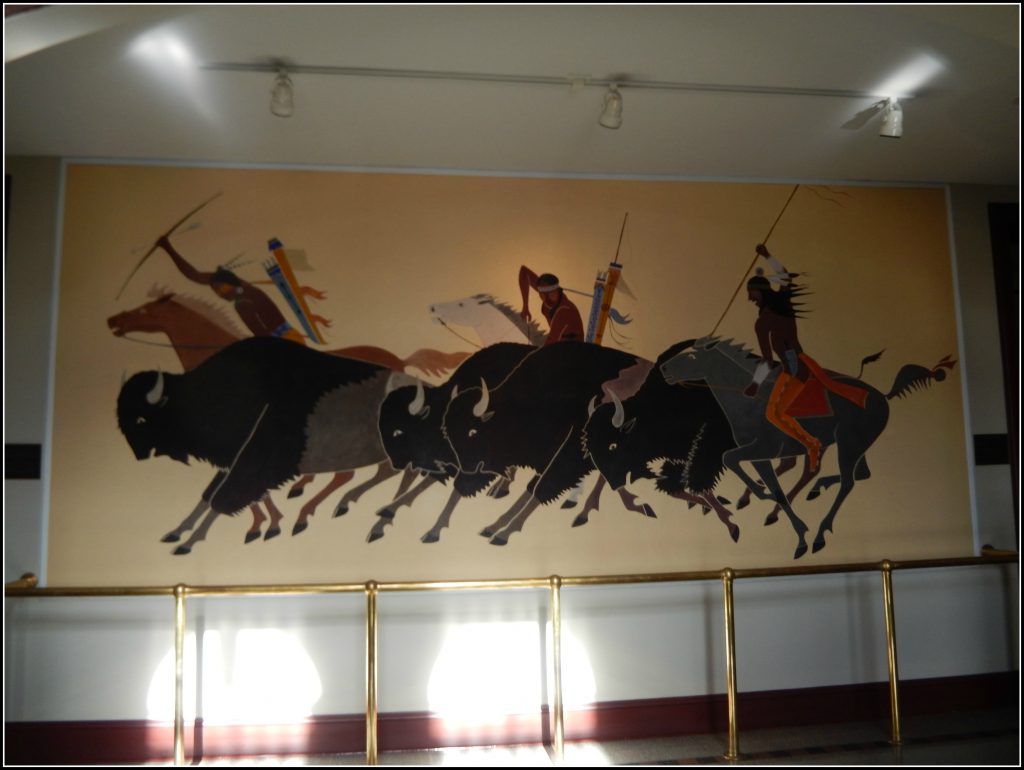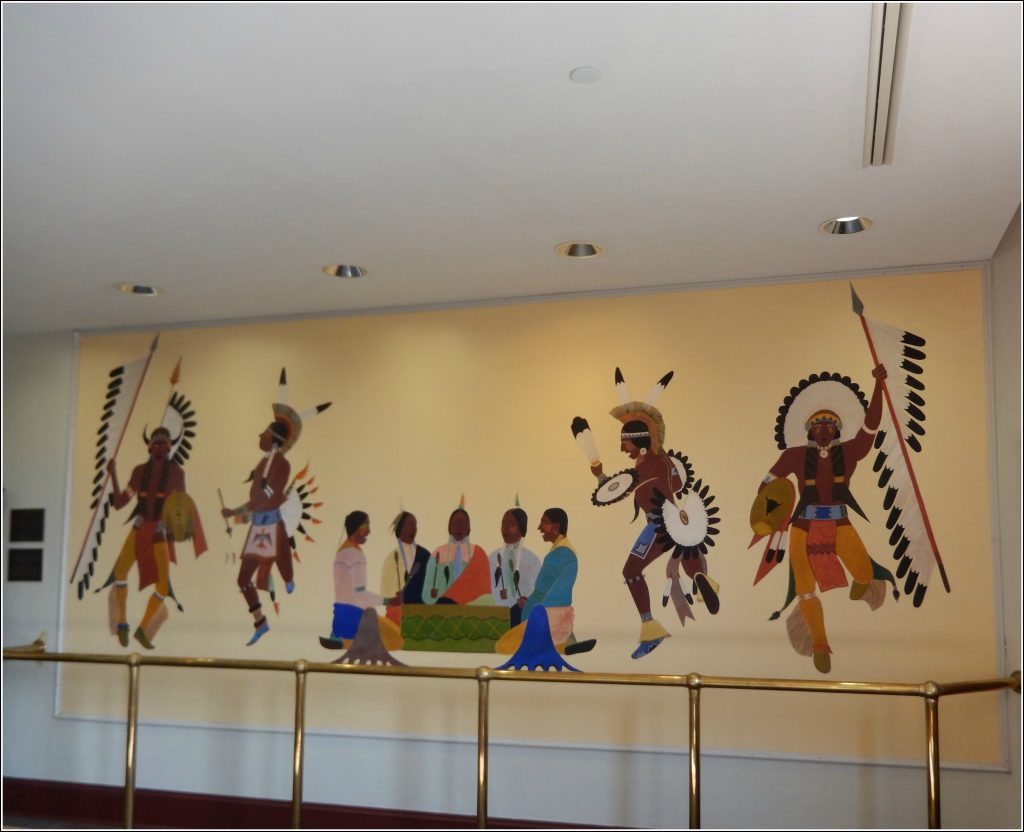Northeastern State University Campus, Tahlequah.
This building possesses two murals designed and painted by Stephen Mopope and James Auchiah. These men were Native American artists and members of the Kiowa Five.
Kiowa Buffalo Hunt
Located on the first floor just inside the main entrance. Under the PWAP, Mopope and either James Auchiah or Jack Hokeah created tow murals for Seminary Hall at Northeastern State University, Mopope demonstrated more fondness for the early nineteenth-century bison hunts than most of his colleagues, and he returned to the subject throughout the 1930s and 1940s. The horizontal, nearly panoramic format of the mural provided him with a sparawling, dynamic scene of the engagement between hunters and bison. The hunt clearly takes place before the advent of guns among the Kiowa, and the hunters ride with bows drawn, hoping to make a quick kill. Mopope’s staging of the action, with hunters riding dangerously close to the bison, suggests that he may have been conscious of the popularity of Charles M. Russell’s bison hunting scenes. Mopope gives the imagery his own stylistic cast, however, with the use of broad areas of flat color and sharp contours, which he has uncharacteristically painted white.

Kiowa War Dance
The depiction of traditional dances in Kiowa War Dance is also characteristic of the art of the Kiowa Five. The artists emphasize the rhythm of the dance through the five drummers who beat the large war drum and sing a traditional accompaniment. In addition, the multiple positions of the dancers, with two presented frontally and two presented in profile, also creates a visual rhythm that alludes to the varied movements of the dance. Apart from the artists’ interest in rhythm, they also demonstrated a concern for the details of dress, and they clad the outside dancers in nineteeth-century garb while the inside dancers wear the twentieth-century powwow garb that the Kiowa artists often used. Such a contrast suggests a historical continuity between the earlier performances and later performances of the dance, and the importance of tradition among the Kiowa.




Recent Comments